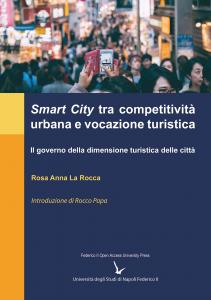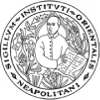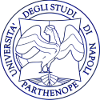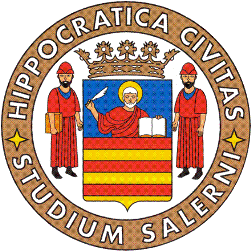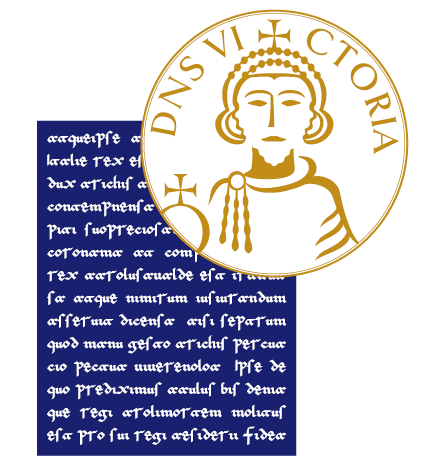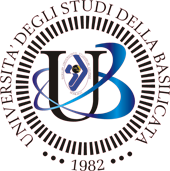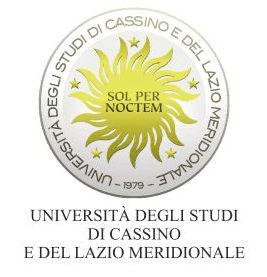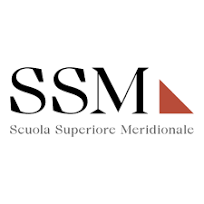Smart city tra competitività urbana e vocazione turistica
Keywords:
competitività urbana, competitività turistica, turismo urbano, smart city, sostenibilitàSinossi
Editore: FedOA Press - Federico II Open Access University Press
Collana: Smart City, Urban Planning for a Sustainable Future
Pagine: 217
Lingua: Italiano
NBN: http://nbn.depositolegale.it/resolver.pl?nbn=urn:nbn:it:unina-290804
Abstract: L’interesse per il turismo urbano, soprattutto nell’ambito degli studi di matrice socio-geografica, risale alla seconda metà del secolo scorso. Tuttavia, già nei primi lavori scientifici si evidenziava una separazione tra chi si occupava di turismo senza considerare la città e viceversa. Lo studio presentato in questo volume analizza il turismo quale fenomeno integrato nel processo di trasformazione della città. Rivisitando il paradigma della Smart City applicato alla destinazione turistica, il lavoro si pone l’obiettivo di evidenziare luci ed ombre della relazione turismo-città nell’ottica della competitività urbana.
Downloads
Riferimenti bibliografici
Abreu Novais, M., Ruhanen, L., & Arcodia, C. (2015b). Tourism destination competitiveness: Proposing a framework for measurement. CAUTHE 2015: Rising Tides and Sea Changes: Adaptation
Aiginger, K., Bärenthaler-Sieber S., Vogel, J. (2013). Competitiveness under New Perspectives THEME SSH.2011.1.2-1 Socio-economic Sciences and Humanities Europe moving towards a new path of economic growth and social development - Collaborative project Work Package 301 MS46 "Research paper competitiveness under new perspectives" Wsternorking Paper no 44
Alberti, M., Solera, G., & Tsetsi, V. (1994). La città sostenibile. Franco Angeli, Milano, 109.
Albino V., Berardi U., & Dangelico R.M. (2015). Smart cities: definitions, dimensions, performance, and initiatives. Journal Urban Technology, 22 (1).
Almobaideen, W., Krayshan, R., Allan, M., & Saadeh, M. (2017). Internet of Things: Geographical Routing based on healthcare centers vicinity for mobile smart tourism destination. Technological Forecasting and Social Change, 123, 342-350. Alsetoohy e Ayoun, 2018
Alonso, W. (1975). Urban Zero Population Growth. In Olson, M. & Landsberg, H. (eds). The No-growth Society, Abingdon, Frank Cass, pp. 191-206.
Amendola, G. (1999). Il turismo e le politiche per il cittadino. In Colantoni, M.(ed.) Turismo, una tappa per la ricerca. Patron Editore, Bologna.
Anthopoulos, L.G. (2015). Understanding the Smart City Domain: A Literature Review. In: Rodríguez-Bolívar, M.P. (ed.), Transforming City Governments for Successful Smart Cities, Public Administration and Information Technology 8, Springer International Publishing Switzerland. DOI: 10.1007/978-3-319-03167-5_2.
Anthopoulos, L.G. (2017). Understanding smart cities: A tool for smart government or an industrial trick? (Vol. 22, p. 293). Cham: Springer International Publishing. Apicerni, V., & Marasco, A. (2019). Dalla competitività delle città d’arte italiane alla sfida dell’innovazione smart per il turismo culturale. In E. Becheri & A. Morvillo (Eds.), Rapporto sul Turismo Italiano – XXIII EDIZIONE 2018/2019 (pp. 341-360). Napoli: Rogiosi Editore.
Apicerni, V., Maggiore, G. & Marasco, A. (2021). Smart Tourism: un'analisi della competitività delle città italiane. www.researchgate.net/publication/351730358
Aru, S. & Pollio A. (2013). Oltre la smart city. In: Santangelo M., Aru S. e Pollio A. (a cura di), Smart city. Ibridazioni, innovazioni e inerzie nelle città contemporanee, Roma: Carocci editore.
Ashworth G. & Page S.J. (2011). Urban tourism research: Recent progress and current paradoxes. Tourism Management 32 (2011) 1-15.
Ashworth G.J. (1992) “Is there an urban tourism?”, Tourism Recreation Research
Ashworth, G. & Goodall, B. (1990). Marketing Tourism Places. Routledge. London
Ashworth, G.J. & Tunbridge, J. E. (2004). Whose tourist-historic city? Localizing the global and globalizing the local. In Lew, A.A., Hall, C.M., & Williams, A.M. (Eds.). A companion to tourism. John Wiley & Sons.
Ashworth, G.J. (1989). Urban tourism: an imbalance in attention. In C. Cooper (Ed.). Progress in tourism, recreation and hospitality management, Vol. 1 (pp. 33–54). London: Belhaven.
Azzopardi, E. & Nash, R. (2017). A Review of Crouch and Ritchie's, Heath's, and Dwyer and Kim’s Models of Tourism Competitiveness. Tourism analysis, 22(2), 247-254.
Barberis, W. (2008). L’impatto del settore turistico sui contesti urbani. Cittalia.
Battarra, R., Fistola, R., & Rocca, R. A. L. (2016). City SmartNESS: the energy dimension of the urban system. In Papa R. & Fistola, R. (Eds). Smart Energy in the Smart City (pp. 1-23). Springer, Cham.
Batty M., Axhausen K.W., Giannotti F., Pozdnoukhov A., Bazzani A., Wachowicz M., Ouzounis G. & Portugali Y. (2012). Smart cities of the future. The European Physical Journal Special Topics, 214, 481–518. DOI: 10.1140/epjst/e2012-01703-3.
Batty, M. (2013). Big data, smart cities and city planning. Dialogues in Human Geography, 3: 274-279. DOI: 10.1177/2043820613513390
Becattini, G. (2000). Distrettualità, fra industria e agricoltura. in Atti dei Georgofili, Firenze.
Becheri, E. & Biella, A. (2013). L'intermediazione della filiera del turismo organizzato. Maggioli Editore.
Becheri, E. & Deodato, G., (1994), “Il turismo, evoluzione storica e tendenze attuali”, Tecnologia 2000, n. 9, Le Monnier, Firenze.
Becheri, E. (2009). Rapporto sul turismo italiano, 2008-2009: pensare turisticamente. Rapporto sul turismo italiano, 2008-2009, 0-0.
Begovic´, B. (1991). The Economic Approach to Optimal City Size. In Progress in Planning, pp. 94-161.
Bellagamba, A., Brunett,i F., Pencarelli, T., & Vigolo, V. (2007). La letteratura italiana ed internazionale sul destination management. In Sciarelli S. (ed). Il management dei sistemi turistici locali: strategie e strumenti per la governance. Giappichelli. Torino.
Belussi, F., & Pilotti, L. (2000). Knowledge creation and collective learning in the Italian local production systems. Università di Padova.
Beritelli, P., & Bieger, T. (2014). From destination governance to destination leadership–defining and exploring the significance with the help of a systemic perspective. Tourism review, 69(1), 25-46.
Bernardi, U., & Filippi, V. (2004). Dal Turismo ai turismi: trasformazioni sociali e sfide culturali. Turismo, territorio, identità. Ricerche ed esperienze nell’area mediterranea, Milano: Franco Angeli.
Bibri S.E. e Krogstie J. (2017a). ICT of the new wave of computing for sustainable urban forms: Their big data and context-aware augmented typologies and de¬sign concepts. Sustainable Cities and Society, 32: 449-474. DOI: 10.1016/j.scs.2017.04.012.
Bibri, S.E. & Krogstie, J. (2017b). Smart sustainable cities of the future: An extensive interdisciplinary literature review. Sustainable Cities and Society, 31, 183-212. DOI: 10.1016/j.scs.2017.02.016.
Bieger, T. (1998). Reengineering Destination Markets Organisations. The Case of Switzerland, Revue de Tourisme, Vol. 53, n. 3.
Bieger, T. (2000). Destination management e finanziamenti. In Pechlaner H., Weiermair K., Milano, T.U.P (eds) Destination management. Fondamenti di marketing e gestione delle destinazioni turistiche, a cura Touring Editore.
Boes, K., Buhalis, D., & Inversini, A. (2016). Smart tourism destinations: ecosystems for tourism destination competitiveness. International Journal of Tourism Cities.
Boffi M. (2020). Metodo e misurazione dell’accessibilità urbana. In: Castrignanò M., Colleoni M., Pronello C., Muoversi in città. Accessibilità e mobilità nella metropoli contemporanea, FrancoAngeli, Milano 2012, pp. 43-46.
Borlini B., Memo F., Ripensare l’accessibilità urbana, Cittalia, paper on-line, 2009, p. 27-31, in riferimento a: Kauffman V., Bergman M.M., Joye D., Motility: Mobility as Capital, in: “International Journal of Urban and Regional Research”, Vol. 28 (4), 2004, pp. 745-56.
Botti, L., & Peypoch, N. (2013). Multi-criteria ELECTRE method and destination competitiveness. Tourism Management Perspectives, 6, 108-113.
Bruce, C.W., & Smith, S.C. (2011). Spatial Statistics in Crime Analysis. International Association of Crime Analysts: Overland Park, KS, USA, 2011.
Brunetti, F. (1999). Il turismo sulla via della qualità. CEDAM, Padova.
Buckley, R. C., Cooper, M. A., Chauvenet, A., & Zhong, L. S. (2022). Theories of experience value & mental health at tourism destinations: Senses, personalities, emotions and memories. Journal of Destination Marketing & Management, 26, 100744.
Buhalis, D. (2000a). Marketing the competitive destination of the future. Tourism Management, 21(1), 97e116.
Buhalis, D. (2021). Drivers of e-Tourism. In Handbook of e-Tourism (pp. 1-17). Cham: Springer International Publishing.
Buhalis, D., & Amaranggana, A. (2013). Smart tourism destinations. In Information and communication technologies in tourism 2014 (pp. 553-564). Springer, Cham.
Buhalis, D., & Amaranggana, A. (2014). Smart tourism destinations. In Information and communication technologies in tourism 2014 (pp. 553-564). Springer, Cham.
Buhalis, D., & Leung, R. (2018). Smart hospitality—Interconnectivity and interoperability towards an ecosystem. International Journal of Hospitality Management, 71, 41-50. Byun et al., 2017
Buhalis, D., & Spada, A. (2000b). Destination management systems: criteria for success–an exploratory research. Information Technology & Tourism, 3(1), 41-58.
Burkard, A.J. & Medlik, S. (1974). Tourism Past Present and Future, William Heinemann, Ltd, London.
Butler, R. (2015). The evolution of tourism and tourism research. Tourism Recreation Research, 40(1), 16-27.
Camagni, R. (1991). Technological change, uncertainty and innovation networks: towards a dynamic theory of economic space. Regional science (pp. 211-249). Springer, Berlin, Heidelberg.
Camagni, R. (2003), A proposito di competitività territoriale: concetto solido o fuorviante? in Cucculelli M., Mazzoni R., Risorse e competitività, Franco Angeli, Milano.
Camagni, R. (2022). Economía urbana. Antoni Bosch editor.
Camagni, R., & Maillat, D. (2006). Milieux innovateurs: théorie et politiques (pp. 1-502). Economica.
Camagni, R., & Rabellotti, R. (2019). Footwear production systems in Italy: a dynamic comparative analysis. In The Dynamics of Innovative Regions (pp. 139-164). Routledge.
Camagni, R., Capello, R. & Caragliu, A. (2015). The Rise of Second-Rank Cities: What Role for Agglomeration Economies? European Planning Studies, pp. 1069-1089.
Camagni, R., Capello, R. (2002). Apprendimento collettivo e competitività territoriale. Franco Angeli.
Canfora, F., & Corbisiero, F. (2014). Centro Direzionale of Naples. A “Smart” Concept. Tema. Journal of Land Use, Mobility and Environment, 7(3), 315-332. http://dx.doi.org/10.6092/1970-9870/2792
Caragliu, A., Del Bo, C., & Nijkam,p P. (2011). Smart cities in Europe. Journal of Urban Technology, 18 (2), 65-82. DOI: 10.1080/10630732.2011.601117.
Casarin, F. (2005). La soddisfazione del turista tra ricerche quantitative e qualitative. Sinergie, n°66.
Cass, N., Shove, E., Urry, J. (2005). Social exclusion, mobility and access. The sociological review. Blackwell Publishing Ltd, Oxford.
Caves, R.W. & Walshok, M.G. (1999). Adopting innovations in information technology: The California municipal experience. Cities, 16(1): 3-12. DOI: 10.1016/S0264-2751(98)00049-3.
Cdp (2013). Smart City. Progetti di sviluppo e strumenti di finanziamento, Report monografico. https://www.cdp.it/ImagePub.aspx?id-=290882, ultimo accesso ottobre 2017.
Celino, I. & Kotoulas, S. (2013) Smart cities. IEEE Internet Comput 17(6):8–11
Chainey, S .& Ratcliffe, J.H. (2005). GIS and Crime Mapping. Wiley: London, UK, 2005.
Chandler, J., & Chen, S. (2015). Prosumer motivations in service experiences. Journal of Service Theory and Practice, 25(2), 220-239.
Chung, N., Lee, H., Ham, J., & Koo, C. (2021). Smart Tourism Cities’ Competitiveness Index: A Conceptual Model. In Information and Communication Technologies in Tourism 2021 (pp. 433-438). Springer, Cham.
Ciciotti, E. (2006). La competizione tra le città: aspetti teorici e implicazioni di politica economica, 1000-1014.
Ciciotti, E., Dallara, A. & Rizzi, P. (2006). Una geografia della sostenibilità dei sistemi locali italiani. XXVII Conferenza di Scienze Regionali, 11 ottobre, Pisa.
Cocola-Gant, A. (2018). Tourism gentrification. In Handbook of gentrification studies. Edward Elgar Publishing.
Cocola-Gant, A., & Lopez-Gay, A. (2020). Transnational gentrification, tourism and the formation of ‘foreign only’enclaves in Barcelona. Urban studies, 57(15), 3025-3043.
Cohen, E. (1979). A phenomenology of tourist experience. Sociology, vol 13, n.2.
Cohen, E. (2004). Contemporary tourism: diversity and change. Elsevier, London.
Colding, J. & Barthel S. (2017). An urban ecology critique on the “Smart City” model. Journal of Cleaner Production, 164: 95-101. DOI: 10.1016/j.jclepro.2017.06.191.
Cooper C., Fletcher J., Gilbert D. & Wanhill S. (1993). Tourism Principles and Practices. Addison Wesley Longman. London.
Corbisiero, F. & Ruspini, E. (2018). Millenials and Generation Z: challenges and future perspectivies for international tourism. Journal of Tourism Futures. Vol. 4, n. 1.
Corbisiero, F., & La Rocca, R. A. (2020). Tourism on demand. New form of urban and social demand of use after the pandemic event. TeMA-Journal of Land Use, Mobility and Environment, 91-104.
Corbisiero, F. (2022) Manuale di ricerca sociale sul turismo. Concetti, metodi, fonti. UTET e Agostini Editore. Torino.
Corrigan, P. (1999). La sociologia dei consumi. Franco Angeli, Milano.
Costa, P., & Manente, M., (1995). A Survey and a Model of Qualitative Choice. Journal of Travel and Tourism
Costa, P., & Manente, M., (1996). Monitoring Excursionist Flows. Quaderni CISET, n. 13
Costa, P., Manente M., & Van Der Borg J. (1993). Traditional Tourism Cities:Problems And Perspectives, quaderni CISET, n. 1.1/93.
Cracolici, M.F. & Nijkamp, P. (2008). The attractviness and competitiveness of tourist destinations: A study of Southern Italian Regions. Tourist Management, XXX(3), pp.336-334
Crouch, G. I. (1992). Effect of income and price on international tourism. Annals of Tourism Research, 19(4), 643–664.
Crouch, G. I. (2011). Destination competitiveness: An analysis of determinant attributes. Journal of Travel Research, 50(1), 27–45.
Crouch, G. I., & Ritchie, J. R. B. (1999). Tourism, competitiveness and societal prosperity. Journal of Business Research, 44(3), 137–152.
Crouch, G.I. (2011). Destination competitiveness: An analysis of determinant attributes. Journal of travel research, 50(1), 27-45.
Custom Survey Research Engagement. Available online: https://www.phocuswright.com.
Cvelbar, LK, Dwyer, L, Koman, M. & Mihalic, T. (2015). Drivers of Destination Competitiveness in Tourism: A Global Investigation. Journal of Travel Research, pp. 1-10.
d’Harteserre, A. (2000). Lessons in managerial destination competitiveness in the case of Foxwoods Casino resort. Tourism Management, 21(1), 23-32.
Dahles, H. (1998). Redefining Amsterdam as a tourist destination. Annals of Tourism Research 25 (1) pp. 55-69.
Dameri, R.P. (2017). Smart City Implementation, Progress in IS, Springer International Publishing. DOI 10.1007/978-3-319-45766-6_3.
Dann, G.M. (1981). Tourist motivation an appraisal. Annals of TourismResearch, 8(2), 187–219.
De Luca, A. (2013) Oltre gli indicatori: verso una dimensione politica della smart city. In: Santangelo M., Aru S. e Pollio A. (a cura di), Smart city. Ibridazioni, innovazioni e inerzie nelle città contemporanee, Roma: Carocci editore. DOI: 10.1080/10630732.2014.942092.
De Rubertis, R. I. (1994). Problemi dell’accessibilità. Lo Spazio Pedonale nel Disegno della Città. Proceedings of the Convegno Perugia, Perugia, Italy, 15.
Della Corte, V. (2012). The evolution of tourist product as expression of experience-based innovation. Advances in Tourism Studies, 1, 301-336.
Della Corte, V., & Sciarelli, M. (2003, November). Evoluzione del marketing nella filiera turistica: Il ruolo dell’Information & Communication Technology. In Congresso Internazionale sulle Tendenze di Marketing (pp. 28-29).
Di Falco, M. (1997). Comunicazione d’impresa nel settore del turismo. In Macaone, I. e Sichenze, A. (eds) Urbsturismo. Dimensione culturale, progetto e prime esperienze in Basilicata. Franco angeli, Milano.
Dorcic, J., Komsic, J., & Markovic, S. (2019). Mobile technologies and applications towards smart tourism–state of the art. Tourism Review.
Douglas, G., & Pearce, S.J. (2015). Urban management, destination management and urban destination management: A comparative review with issues and examples from New Zealand. Int. J. Tour. Cities 2015, 1, 1–17, doi:10.1108/IJTC-08-2014-0002.
Doxey, G. V. (1975). A Causation Theory of Visitor-Resident Irritants: Methodology and Research Inferences, in Proceedings of the 6th Annual Conference of the Travel Research Association, Travel Research Association ed., Travel Research Association, San Diego, CA. pp. 195-198.
Duhamel, P. & Knafou, R. (2007). Le tourisme dans la centralité parisienne. In La Métropole Parisienne. Centralités, Inégalités, Proximités; Saint-Julien, T., Le Goix, R., Eds.; Mappemonde: Paris, France, 2007; pp. 39–64.
Dupeyras, A., & MacCallum, N. (2013). Indicators for measuring competitiveness in tourism: A guidance document, OECD tourism papers, 2013/02. OECD Publishing. https://doi. org/10.1787/5k47t9q2t923-en
Dwyer, L., & Kim, C. (2003). Destination competitiveness: determinants and indicators. Current issues in tourism, 6(5), 369-414.
Ejarque J. (2003). La destinazione turistica di successo. Hoepli. Milano.
Ejarque J. (2016). Le DMO e gli enti del turismo italiani sono destinati a sparire? Four Tourism. Idee ed opportunità per il turismo. http://www.fourtourism.it
Enright, M.J. & Newton, J. (2004). Tourism destination competitiveness: A quantitative approach. Tour. Manag. 2004, 25, 777–788, doi:10.1016/j.tourman.2004.06.008.
European Commission (2011). Cities of tomorrow. Challenges, visions, ways forward. Luxembourg: Publications Office of the European Union. DOI: 10.2776/41803.
European Travel Commission (ETC) (2021) ENCOURAGING SUSTAINABLE TOURISM PRACTICES Brussels, September 2021 ETC Market Intelligence Report https://etc-corporate.org/reports/handbook-on-encouraging-sustainable-tourism-practices/
Evans, G, (2000). Planning for urban tourism: a critic of borough development plans and tourism policy in London. International Journal of Tourism Research, Vol. 2, n. 5.
Fabris G., 2008, Societing, Egea, Milano;
Femenia-Serra, F. (2018a). Smart tourism destinations and higher tourism education in Spain. Are we ready for this new management approach? In Information and communication technologies in tourism 2018 (pp. 437-449). Springer, Cham.
Femenia-Serra, F., & Ivars-Baidal, J. (2018b). Smart tourism: Implicaciones para la gestión de ciudades y destinos turísticos.
Femenia-Serra, F., & Neuhofer, B. (2018c). Smart tourism experiences: Conceptualisation, key dimensions and research agenda. Investigaciones Regionales-Journal of Regional Research, (42), 129-150.
Femenia-Serra, F., Neuhofer, B., & Ivars-Baidal, J. A. (2019). Towards a conceptualisation of smart tourists and their role within the smart destination scenario. The Service Industries Journal, 39(2), 109-133.
Figel, J. (2006). The Economy of Culture in Europe.
Fistola, R. & La Rocca, R.A. (2013a) Smart City Planning: A systemic approach. In Establishing Bridges, Proceedings of the 6th Knowledge Cities World Summit (KCWS-2013), Istanbul, Turkey, 9–13 September 2013; Yiğitcanlar, T., Bulu, M., Eds.; Lookus Scientific: Istanbul, Turkey, 2013.
Fistola, R. & La Rocca, R.A. (2014). The Sustainable City and the Smart City: measuring the urban entropy first. In: Marchettini N., Brebbia C.A., Pulselli R. and Bastianoni S. (eds), The Sustainable City (pp.537-548). Boston: WIT Press.
Fistola, R., & La Rocca, R. A. (2017). Driving functions for urban sustainability: the double-edged nature of urban tourism. International Journal of Sustainable Development and Planning, 12(3), 425-434.
Fistola, R. (2013). Smart City: riflessioni sull'intelligenza urbana. TeMA Journal of Land Use, Mobility and Environment, 6(1), 47-60.
Fistola, R., & La Rocca, R.A. (2013b). Smart City Planning: a systemic approach. In the 6th Knowledge Cities World Summit, KCWS 2013 (pp. 520-529). Lookus Scientific.
Fistola, R., Raimondo, M., & La Rocca, R.A. (2017). The smart city and mobility: The functional polarization of urban flow. In 2017 5th IEEE International Conference on Models and Technologies for Intelligent Transportation Systems (MT-ITS) (pp. 532-537). IEEE.
Flagestad, A., Hope, C. A., Svensson, B., & Nordin, S. (2005). The tourist destination; a local innovation system? The creation of a model.
Florida, R. (2003). Cities and the creative class. City & community, 2003, 2.1: 3-19.
Forlani, F. (2001) Il marketing turistico nella prospettiva dell’economia delle esperienze, Università degli Studi di Urbino, Facoltà di Economia.
Framke W. (2002) The destination as a concept: a discussion of the business related perspective versus the socio-cultural approach in tourism theory. Scandinavian Journal of Hospitality and Tourism. 92-108. Vol. 2. N.2. Taylor and Francis.
Franch M. (2002) (ed). Destination Mnagement: governare il turismo tra locale e globale. Giappichelli. Torino.
Franch, M. (2010) Marketing delle destinazioni turistiche. McGraw-Hill Companies. Milano
Frechtling, D.C. (2000). Assessing the Impacts of Travel and Tourism-Measuring Economic Benefits'. International Library of Critical Writings in Economics, 121, 9-27.
Füller, H., & Michel, B. (2014). ‘Stop Being a Tourist!’ New Dynamics of Urban Tourism in Berlin-Kreuzberg. International Journal of Urban and Regional Research, 38(4), 13041318. doi: 10.1111/1468-2427.12124.
Gajdošík, T. (2018). Smart Tourism: Concepts and Insights from Central Europe. Czech Journal of Tourism, 7(1), 25-44. DOI: 10.1515/cjot-2018–0002.
Gajdošík, T. (2020). Smart tourists as a profiling market segment: Implications for DMOs. Tourism Economics, 26(6), 1042-1062.
Gajdošík, T., Gajdošíková, Z., Maráková, V., & Flagestad, A. (2017). Destination structure revisited in view of the community and corporate model. Tourism Management Perspectives, 24, 54-63.
Gargiulo, C., Russo, L., la Rocca, R. A., & Battarra, R. (2018). L'applicazione del paradigma smart city in Italia: luci ed ombre delle sperimentazioni nelle città metropolitane. L'applicazione del paradigma smart city in Italia: luci ed ombre delle sperimentazioni nelle città metropolitane, 26-50.
Gemini, L. (2008). In viaggio. Immaginario, comunicazione e pratiche del turismo contemporaneo. Franco Angeli.
Gemmiti, R. & Salvati, L. (2010). Turismo e competitività territoriale. Un contributo geografico-economico. XXXI Conferenza Italiana di Scienze Regionali, 20-22 settembre 2010.
Gemmiti, R. (2007). Competitività territoriale in sostenibilità. L’interpretazione alla base della ricerca, In: Prezioso M., Bencardino F. (eds.) Competitività in sostenibilità: la dimensione territoriale nell'attuazione dei processi di Lisbona/Gothenburg nelle regioni e nelle province italiane. Geotema, Special Issue, Vol. 31-32, pp. 19-27.
Georgulas N. (1970) Tourism destination features. Journal of Town Planning Institute, 56, 442-446.
Getis, A. & Ord, J.-K. (1996). Local spatial statistics: An overview. In Spatial Analysis: Modelling in a GIS Environment; Longley, P., Batty, M., Eds; John Wiley & Sons: New York, NY, USA, 1996; pp. 261–282.
Giffinger R., Fertner C., Kramar H., Kalasek R., Pichler-Milanovic N. e Meijers E. (2007). Smart Cities: Ranking of European Medium-Sized Cities. Vienna, AU: Centre of Regional Science (SRF), Vienna University of Technology. http://www.smart-cities.eu/, ultimo accesso novembre 2022.
Gilli, M. (2009). La città come destinazione turistica multipurpose. In Nuvolati, G., & Piselli, F. (Eds) La città: bisogni, desideri, diritti. La città diffusa: stili di vita e popolazioni metropolitane. FrancoAngeli, Milano.
Gössling, S., Ring, A., Dwyer, L., Andersson, A. C., & Hall, C.M. (2016). Optimizing or maximizing growth? A challenge for sustainable tourism. Journal of Sustainable Tourism, 24(4), 527–548.
Gostin, L.O., & Lucey, D. (2015). Middle East respiratory syndrome: a global health challenge. Jama, 314(8), 771-772.
Graham, S. & Marvin, S. (2001). Splintering urbanism: Networked infrastructures, technological Mobilities and the urban conditions. London: Routledge.
Grasselli, P. (1989). Economia e politica del turismo. FrancoAngeli, Milano.
Gregori, G. L., Pencarelli, T., Splendiani, S., & Temperini, V. (2013). Turismo sostenibile e creazione di valore per il territorio: verso un modello olistico di misurazione dell'impatto degli eventi. In Management per la sostenibilità dello sviluppo turistico e la competitività delle destinazioni (Vol. 1, pp. 219-240). Società editrice il Mulino.
Gretzel, U., Reino, S., Kopera, S., & Koo, C. (2015 a). Smart tourism challenges. Journal of Tourism, 16(1), 41-47.
Gretzel, U., Sigala, M., Xiang, Z. & Koo, C. (2015 b). Smart tourism: foundations and developments. Electron Markets 25(3):179–188.
Gretzel, U., Zhong, L., & Koo, C. (2015c). Application of smart tourism to cities. International Journal of Tourism Cities, 2(2).
Gretzel, U.; Sigala, M.; Xiang, Z.; & Koo, C. (2015). Smart tourism: Foundations and developments. Electron. Mark. 2015, 25, 179–188, doi:10.1007/s12525-015-0196-8.
Guidoum, A.C. (2015). Kernel Estimator and Bandwidth Selection for Density and its Derivatives. 2015.
Gulotta, G. (2019). Aspetti psicologici del turismo esperienziale. Aspetti psicologici del turismo esperienziale, 627-638.
Gursoy, D., Chi, C. G., & Dyer, P. (2009). An examination of locals’attitudes. Annals of Tourism Research, 36(4), 723-726.
Guzmán, P.C., Roders, A.P., & Colenbrander, B.J.F. (2017). Measuring links between cultural heritage management and sustainable urban development: An overview of global monitoring tools. Cities, 60, 192-201.
Haden, L. (2007). Tourism and climate change. Travel & Tourism Analyst, (1), 1-37.
Hall, MC (2011). A typology of governance and its implications for tourism policy analysis. Journal of Sustainable Tourism, Routledge, 19:4-5, 437-457. Doi: 10.1080/09669582.2011.570346
Hannerz, U. (1992). Esplorare la città. Antropologia della vita urbana. Il Mulino, Bologna, pp. 207, 225, 228.
Hansen, W. G. (1959). Accessibility and residential growth. Doctoral dissertation. MIT.
Hart, T. & Zandbergen, P. (2014). Kernel density estimation and hotspot mapping: Examining the influence of interpolation method, grid cell size, and bandwidth on crime forecasting. Polic. Int. J. Police Strateg. Manag. 2014, 37, 305–323, doi:10.1108/PIJPSM-04-2013-0039.
Hassan, S.S. (2000). Determinants of market competitiveness in an environmentally sustainable tourism industry. Journal of travel research, 38(3), 239-245.
Hoepli (2020). Italian Dictionary. Hoepli.it
Hollands, R.G. (2008). Will the real Smart City please stand up? City. 12.3: 303/320. DOI: 10.1080/13604810802479126.
Hollands, R.G. (2015). Critical interventions into the corporate smart city. Cambridge Journal of Regions, Economy and Society, 8, 61-77. DOI:10.1093/cjres/rsu011.
Hooper J. (2015). A destination too far? Modeling destination accessibility and distance decay in tourism. GeoJournal (2015) 80:33–46 DOI 10.1007/s10708-014-9536-z.
Hu, Y.Z. & Ritchie, J.R.B. (1993). Measuring destination attractiveness: a contextual approach. Journal of Travel Research, XXXII(2) pp 105-132.
Huang, C. D., Goo, J., Nam, K., & Yoo, C. W. (2017). Smart tourism technologies in travel planning: The role of exploration and exploitation. Information and Management, 54(6), 757–770. DOI: 10.1016/j.im.2016.11.010.
ICity Rank (2022). Le città più digitali d’Italia. https://www.forumpa.it/citta-territori/icity-rank-2022
Ierace, G. (1991). La regione turistica. Cedam, Padova.
Ilsole24ore (2022). 33a indagine della Qualità della vita. https://lab24.ilsole24ore.com/qualita-della-vita/tabelle/
Ingram, D. R. (1971). The concept of accessibility: a search for an operational form. Regional Studies, 5(2), 101-107.
Innocenti, P. (1996). Geografia del turismo. La Nuova Italia Scientifica, Roma.
ISFORT (2009) La domanda di mobilità degli italiani, Rapporto congiunturale di fine anno, www.isfort.it
Isi lab (2017). Smart City Index Report. http://isi-en.yonsei.ac.kr/download/2017-smart-cityindex-report/.
ISPRA (2015) Indagine sulle strutture ricettive a marchio Ecolabel, UE, ISPRA-Servizio Certificazioni Ambientali.
Istat (2020) Classificazione dei Comuni in base alla densità turistica, Legge 17 luglio 2020, n. 77, art. 182. https://www.istat.it/it/archivio/247191.
ISTAT (2021). Classificazione dei Comuni in base alla densità turistica come indicato dalla Legge 17 luglio 2020, n. 77, art. 182 https://www.istat.it/it/archivio/247191
ItaliaOggi (2022). La classifica delle migliori città d’Italia per qualità di vita. https://www.italiaoggi.it/qualita-vita
Ivanka, H.G., Marion, K., Anthony, W.I., & Rob, L. (2023). Tourism destination research from 2000 to 2020: A systematic narrative review in conjunction with bibliographic mapping analysis. Tourism Management, 95, 104686.
Ivars-Baidal, J. A., Vera-Rebollo, J. F., Perles-Ribes, J., Femenia-Serra, F., & Celdrán-Bernabeu, M. A. (2021). Sustainable tourism indicators: what’s new within the smart city/destination approach?. Journal of Sustainable Tourism, 1-24.
Jansen-Verbeke, M. (1986). Inner city tourism: resources, tourists and promoters. Annals of Tourism Research, Elsevier.
Ji, M., Li, M. & King, B. (2016). Incremental effects of the shanghai free-trade zone – an internet informed assessment of Hong Kong’s tourism competitiveness. Journal of China Tourism Research, Vol. 12 No. 1, pp. 24-41, doi: 10.1080/19388160.2015.1137851.
Judd, D.R. (2003). The Infrastructure of the Play. Building the Tourist City; Cleveland State University: Cleveland, OH, USA, 2003.
Kaufmann, V. (2008). Les paradoxes de la mobilité: bouger, s' enraciner (Vol. 46). Collection le savoir suisse.
Kayar, Ç.H. & Kozak, N. (2010). Measuring destination competitiveness: an application of the travel and tourism competitiveness index (2007). Journal of Hospitality Marketing & Management 19(3): 203–216.
Kendall, K.W., & Gursoy, D. (2007). A managerial approach to positioning and branding: Eponymous or efficient. Tourism Analysis, 12(5-6), 473-483.
Kim, J.H. (2010). Determining the factors affecting the memorable nature of travel experiences. Journal of Travel & Tourism Marketing, 27(8), 780–796.
Kirillova, K. & Wang, D. (2016). Smartphone (dis) connectedness and vacation recovery. Annals of Tourism Research, Vol. 61, pp. 157-169, doi: 10.1016/j.annals.2016.10.005.
Kitson, M., Martin, R. & Tyler, P. (2004). Regional competitiveness: an elusive yet key concept?. Regional Studies, Vol. 38 (9), pp. 991-999.
Kliman, M. L. (1981). A quantitative analysis of Canadian overseas tourism. Transportation Research, 15A(6), 487–497.
Koens, K., Postma, A., Papp, B. (2018). Is Overtourism Overused? Understanding the Impact of Tourism in a City Context. Sustainability 2018, 10, 4384, doi:10.3390/su10124384.
Koltko-Rivera, M.E. (2006). Rediscovering the later version of Maslow's hierarchy of needs: Self-transcendence and opportunities for theory, research, and unification. Review of general psychology, 10(4), 302-317.
Komninos, N. (2002). Intelligent Cities. Innovation, Knowledge Systems and Digital Spaces. London: Spon Press.
Koo, C., Shin, S., Gretzel, U., Hunter, W. C., & Chung, N. (2016). Conceptualization of smart tourism destination competitiveness. Asia Pacific Journal of Information Systems, 26(4), 561-576.
Kotkin, J. (2014). Research Report for the Seminar on Size is Not the Answer: The Changing Face of the Global City, Singapore, Civil Service College Singapore.
Kozak, M. (2002). Comparative analysis of tourist motivations by nationality and destinations. TourismManagement, 23(3), 221–232.https://doi.org/10.1016/S0261-5177(01)00090-5.
Kresl, P.K. & Ietri D. (2016), Smaller Cities in a World of Competitiveness, Londra-New York, Routledge.
Krugman, P. (1994). Competitiveness: a Dangerous Obsession. Foreign Affairs, 73, No. 2, 28-44.
Krugman, P. (1996). Making sense of the competitveness debate. Oxford Review of the Economic Policy, 12, 17-25
Kummitha, R.K.R. & Crutzen, N. (2017). How do we understand smart cities? An evolutionary perspective. Cities, 67: 43-52. DOI: 10.1016/j.cities.2017.04.010.
La Rocca R.A. (2010). Leisure Mobility for Enjoying the City. TeMA - Journal of Land Use, Mobility and Environment, 3(3). https://doi.org/10.6092/1970-9870/145.
La Rocca, R. A. (2009). Soft mobility and urban transformation. TeMA-Journal of Land Use, Mobility and Environment, 2.
La Rocca, R. A. (2013). Tourism and city. Reflections about tourist dimension of smart city. TeMA-Journal of Land Use, Mobility and Environment, 6(2), 201-214.
La Rocca, R.A. (2003). Turismo Turismi e Città. Una proposta di Piano di Sviluppo Turistico per Napoli; Collana Di.Pi.S.T. - Sezione Giovani Ricercatori e Dottorato di Ricerca; Giannini Editore: Napoli, Italy, 2003.
La Rocca, R.A. (2014). The Role of Tourism in Planning the Smart City. TeMA. Journal of Land Use, Mobility and Environment, 7(3): 269-283. DOI: http://dx.doi.org/10.6092/1970-9870/2814.
Law, C.M. (1992). Urban tourism and its contribution to economic regeneration. Urban Studies, vol. 29.
Laws, E. (2002). Tourism marketing: quality and service management perspectives. Continuum.
Lee, H., Guillet, B. D., Law, R., & Leung, R. (2012). Robustness of distance decay for international pleasure travelers: A longitudinal approach. International Journal of Tourism Research, 14(5), 409-420.
Lee, P., Hunter, W.C. & Chung, N. (2020). Smart tourism city: developments and transformations. Sustainability 12(10):3958.
Lefebvre, H.(1970). Il diritto alla città. Marsilio editori.
Leung, X.Y. & Baloglu, S. (2013) Tourism competitiveness of Asia Pacific destinations. Tourism Analysis 18(4): 371–384.
Levine, N. (2017). CrimeStat: A Spatial Statistical Program for the Analysis of Crime Incidents. In Shekhar, S., Xiong, H., Zhou, X., Eds Encyclopedia of GIS;.; Springer: Berlin, Germany, 2017.
Li, F., Nucciarelli, A., Roden, S. & Graham, G. (2016). How smart cities transform operations models: a new research agenda for operations management in the digital economy. Production Planning & Control, 27(6): 514-528. DOI: 10.1080/09537287.2016.1147096.
Lindberg K., McCool S., & Stankey G., (1997). Rethinking Carrying Capacity. Annals of Tourism Research, Vol. 24, Part II, pp. 461 – 465.
Litman T. (2008). Evaluating Accessibility for Transportation Planning.Victoria Transport Policy Institute
Logan, J. R., & Molotch, H. L. (2007). Urban fortunes: The political economy of place. Berkeley, CA: University of California Press.
Lombardi, P., Cooper, I., Paskaleva, K. & Deakin, M. (2009). The challenge of designing user-centric e-services: european dimensions. In C. Reddick e C. Hershey (Eds.). Strategies for local e-government adoption and implementation: comparative studies, PA: Idea Group Publishing.
Lubbe, BA (2003). Tourism management in South Africa. Pearson Education South Africa, 2003.
Lynch, K. (1970). Progettare la città. La qualità della forma urbana, Etaslibri, Milano 1990.
Maggi E., Fredella L.F. (2010) The carrying capacity of a tourist destination. Conference Paper, available on research gate https://www.researchgate.net
Maggiore, G., & Becheri, E. (2013). Rapporto sul turismo italiano 2012-2013: XIX Edizione
Mahizhnan, A. (1999). Smart cities: The Singapore case. Cities, 16(1): 13-18. DOI: 10.1016/S0264-2751(98)00050-X.
Maitland, R. (2008). Conviviality and everyday life: The appeal of new areas of London for visitors. International Journal of Tourism Research, 10, 15–25.
Maitland, R. (2010). Everyday life as a creative experience in cities. International Journal of Culture, Tourism and Hospitality Research, 4(3), 176–186.
Maitland, R., & Newman, P. (Eds.). (2009). World tourism cities: Developing tourism off the beaten track. London: Routledge. Marketing, 4 (3).
Manente, M., & Mingotto, E. (2017). La nuova stagione del turismo. Equilibri, 21(2), 383-392.
Manville, C., Cochrane, G., Cave, J., Millard, J., Pederson, J.K., Thaarup, R.K., Liebe, A., Wissner, M., Massink, R., & Kotterink, B. (2014). Mapping smart cities in the EU. Bruxelles: European Parliament, Policy Department A: Economic and Scientific Policy. DOI: http://dx.doi.org/10.2861/3408.
Marchioro, S. (2014). Destination management e Destination marketing per una gestione efficiente delle destinazioni turistiche in Veneto. Turismo e Psicologia 1/2014: 58-74. Padova University Press.
Marshall, A. (1890). Some aspects of competition. The address of the president of section F--Economic Science and Statistics
Marsili, E. (2014). L׳ evoluzione del turismo a Barcellona: dal turismo d׳ affari ai nuovi turismi urbani (Doctoral dissertation, Tesi di Laurea available at https://core. ac. uk/download/pdf/79616777. pdf).
Martin, C. A., & Witt, S. F. (1987). Tourism demand forecasting models: Choice of appropriate variable to represent tourists’ cost of living. Tourism Management, 8(3), 223–245.
Martini U. (2002). Da luoghi a destinazioni turistiche. Ipotesi di destination management nel turismo alpino. In Franch M. (ed) Destination management. Governare il turismo tra locale e globale, Torino, Giappicchelli Editore.
Martinotti G. (1994). La nuova morfologia sociale della metropoli. In Urbanistica, anno XLVI luglio-dicembre 1994, INU Edizioni, Roma.
Maslow, A. H. (1943). A theory of human motivation. Psychological Review, 50(4), 370–396.
Massa, P. & Campagna, M. (2014). Social Media Geographic Information: Recent Findings and Opportunities for Smart Spatial Planning. TeMA Journal of Land use, Mobility and Environment, Special Issue, INPUT 2014 Conference, 645-658. DOI: 10.6092/1970-9870/2528
Attrattività e competitività della destinazione, L., & Battaglini, E. (2014). Turismo sostenibile e tensioni urbane nel terzo millennio. In 9° Congresso Città e Territorio Virtuale, Roma, 2, 3 e 4 ottobre 2013 (pp. 1538-1543). Università degli Studi Roma Tre.
Mathesion, A. & Wall, G. (1982). Tourism: economic, physical and social impacts. Longman.
Mattoni, B., Gugliermetti, F. & Bisegna, F. (2015). A multilevel method to assess and design the renovation and integration of Smart Cities. Sustainable Cities and Society, 15: 105-119. DOI: 10.1016/j.scs.2014.12.002.
Mazanec, J.A., Wöber, K., & Zins, A.H. (2007). Tourism destination competitiveness: from definition to explanation?. Journal of Travel research, 46(1), 86-95.
McKercher, B., & Lew, A. (2003). Distance decay and the impact of effective tourism exclusion zones on international travel flows. Journal of Travel Research, 42(2), 159–165.
McKercher, B., Chan, A., & Lam, C. (2008). The impact of distance on international tourist movements. Journal of Travel Research, 47(2), 208–224.
Mendes, L. (2017). Gentrificação turística em Lisboa: neoliberalismo, financeirização e urbanismo austeritário em tempos de pós-crise capitalista 2008-2009. Cadernos Metrópole 39: 479–512.
Messner, D., & Meyer-Stamer, J.Ö.R.G. (1998). Systemic competitiveness. Latin American and East European Economies In Transition: A Comparative View, 21, 108.
Mezzapelle, D. (2016). Smartness come «stile di vita». Approcci alla discussione, Bollettino della Società Geografica Italiana, Serie XIII, Vol. IX: 489-501.
Milano C., Novelli M. & Cheer J.M. (2019) Overtourism and Tourismphobia: A Journey Through Four Decades of Tourism Development, Planning and Local Concerns. Tourism Planning & Development, 16:4, 353-357.
Mill, R.C. & Morrison, A.M. (1992). The Tourism system. Englewood Cliffs, Prentice Hall. New York.
Miossec, J.M. (1976). Elements pour une Theorie de l'Espace touristique. Chet, Aix- en-Provence.
Miossec, J.M. (1977). L'image touristique comme introduction à la géographie du tourisme. In Annales de géographie (pp. 55-70). Armand Colin.
Morelli, V.G., Weijnen, M., Van Bueren, E., Wenzler, I., De Reuver, M., & Salvati, L. (2013). Towards intelligently-sustainable cities. TeMA Journal of Land Use, Mobility and Environment, 6(1), 73-86. DOI: http://dx.doi.org/10.6092/1970-9870/1496.
Morrison, A M. (2013). Marketing and managing tourism destinations. Routledge.
Mosannenzadeh, F. & Vettorato, D. (2014). Defining Smart City. A Conceptual Framework Based on Keyword Analysis. TeMA. Journal of Land Use, Mobility and Environment, Special Issue, 683-694. DOI: http://dx.doi.org/10.6092/1970-9870/2523.
Mosannenzadeh, F., Bisello A., Vaccaro R., D'Alonzo V., Hunter G.W. & Vettorato D. (2017). Smart energy city development: A story told by urban planners. Cities, 64, 54-65. DOI: 10.1016/j.cities.2017.02.001.
Moutinho, L. (1987). Consumer behaviour in tourism. European Journal of Marketing, Emerald.
Muscarà, C., (1983). Gli spazi del turismo, geografia ed organizzazione dello spazio territoriale. Pàtron, Bologna.
Myers, J.H. & Alpert, M.I. (1968). Determinant buying attitudes: meaning and measurement. Journal of Marketing, Vol. 32 (4), pp. 13-20.
Neirotti, P., De Marco, A., Cagliano, A.C., Mangano, G. & Scorrano, F. (2014). Current trends in Smart City initiatives: Some stylised facts. Cities, 38, 25-36. DOI: 10.1016/j.cities.2013.12.010.
Neuhofer, B., Buhalis, D., & Ladkin, A. (2012). Conceptualising technology enhanced destination experiences. Journal of Destination Marketing and Management, 1(1–2), 36–46. DOI: 10.1016/j.jdmm.2012.08.001.
Niezgoda, A. (2013). Prosumers in the tourism market: the characteristics and determinants of their behaviour. The Poznan University of Economics Review, 13(4), 130.
Novelli, M., Gussing Burgess, L., Jones, A., Ritchie, B.W. (2018), “No ebola...still doomed’ – the ebolainduced tourism crisis”. Annals of Tourism Research, Vol. 70, pp. 76-87.
OCSE (2011), Studi OCSE sul Turismo: Italia: Analisi delle criticità e delle politiche, OECD Publishing, http://www.ontit.it/opencms/opencms/ont/it/documenti/02722.
Odum, H. T. (1988). Self-organization, transformity, and information. Science, 242(4882), 1132-1139.
OECD (1992), Technology and the Economy: The Key Relationships, Paris, Organisation for Economic Co-operation and Development
OECD (1996). Networks of enterprises and local development: competing and cooperating. Local Productive Systems, Paris.
OECD (1997). Industrial competitiveness. Benchmarking Business Environments, Paris.
OECD (2011). Studi OCSE sul turismo. Italia: Analisi delle criticità e delle politiche. OECD Publishing.
OECD (2014). Tourism and the Creative Economy. Paris: OECD
OECD (2011), Studi OCSE sul Turismo: Italia: Analisi delle criticità e delle politiche, OECD Publishing.
Page, S.J & Hall, M. (2003). Managing urban tourism. Pearson Education limited, Harlow, Essex, UK
Page, S.J. (1995). Urban Tourism. Routledge, London.
Papa R. & Fistola R. (2016) (eds). Smart Energy in the Smart City Urban Planning for a Sustainable Future. Switzerland: Springer International Publishing.
Papa, E. (2018). Pianificare per l’accessibilità: misure, applicazioni e barriere. In: Mobilità e sviluppo: Strumenti e competenze per il futuro della mobilità Milano Fondazione Giangiacomo Feltrinelli.
Papa, E., & Vitale Brovarone, E. (2011). Pianificazione dell'accessibilità: teorie, strumenti e applicazioni. In XXXII Conferenza scientifica annuale Aisre. http://hdl.handle.net/1854/LU-4414401
Papa, E., Carpentieri, G., & Guida, C. (2018). Measuring walking accessibility to public transport for the elderly: the case of Naples. TeMA Journal of Land Use, Mobility and Environment, 105-116. 10.6092/1970-9870/5766.
Papa, R., Gargiulo, C. & Galderisi A. (2013). Towards an Urban Planners, Perspective on Smart City. TeMA. Journal of Land Use, Mobility and Environment, 6(l), 517. DOI: 10.6092/1970-9870/1536.
Pappalepore, I., Maitland, R., & Smith, A. (2014). Prosuming creative urban areas. Evidence from East London. Annals of Tourism Research, 44, 227-240.
Paradiso, M. (2013). Per una geografia critica delle «Smart Cities» tra innovazione, marginalità, equità, democrazia, sorveglianza. Bollettino della Società Geografica Italiana Roma - serie XIII, vol. VI, pp. 679-693.
Pasquinelli, C., & Bellini, N. (2017). Global context, policies and practices in urban tourism: An introduction. In Tourism in the City (pp. 1-25). Springer, Cham.
Pazienza, P. & Vecchione, V. (2006). Stima della Capacità di Carico dei flussi turistici nel Parco del Gargano. In Quaderno n. 19/2006, Dipartimento di Scienze Economiche, Matematiche e Statistiche, Università degli Studi di Foggia
Pearce, P.L. (1991). Analysing tourist attractions. Journal of Tourism Studies, vol.2 n. 1, May, 1991.
Pearce, D.G. (1987). Tourism Today: A Geographical Analysis, Longman, London.
Pearce, D.G. (1992). Tourism Organization. Longman, Harlow.
Pearce, D.G. (1998). Tourism development in Paris: Public intervention. Ann. Tour. Res. 1998, 25, 457–476, doi:10.1016/S0160-7383(97)00096-0.
Pearce, D.G. (2001). An integrative framework for urban tourism research. Annals of Tourism Research, 28, 4, pp.926-946, doi:10.1016/S0160-7383(00)00082-7.
Pearce, D.G. (2014). Towards an integrative conceptual framework of destinations. Journal of Travel Research, vol. 53 n. 2:141-153.
Pearce, D.G. (2015). Tourist districts in Paris: Structure and functions. Tour. Manag. 1998, 19, 49–65, doi:10.1016/S0261-5177(97)00095-2.
Pearce, D.G. (1998). Tourism development in Paris: public intervention. Annals of Tourism Research, Vol. 25 n. 2.
Pearce, D.G. (2015). Urban Management, destination management, and urban destination management: a comparative review with issues and examples from New Zeland. International Journal of Tourism Cities, Emerald, Vol. 1, n. 1.
Pearce, P. (1982.) The social Psychology of Tourism, Pergamon, Oxford.
Pearce, P.L. (2005). Tourist Behaviour: Themes and Conceptual Schemes. Aspect of Tourism: 27; The Cromwell Press: Trowbridge, UK, 2005.
Pechlaer, H. & Weiermair, K. (2000). Fondamenti di marketing e gestione delle destinazioni turistiche. TUP. Milano.
Pencarelli, T. & Forlani F. (2002). Il marketing dei distretti turistici – sistemi vitali nell’economia delle esperienze. In Sinergie, n.58.
Pencarelli, T. & Forlani F. (2005). Management e marketing delle destinazioni turistiche. L’esperienza di alcuni S.T.L. italiani. Atti del convegno “Marketing Trend”, Paris.
Peroni, G. (1998). Marketing turistico. Franco Angeli, Milano.
Peroni, G., Formisano, M., Matiddi, M., & Sfodera, F. (2008). Fondamenti di marketing turistico territoriale. Franco Angeli.
Perussia, F. (1984). Le motivazioni psicologiche del turista. In Touring Club Italiano, 90 anni di turismo in Italia 1894-1984, Milano.
Pettit, C., Bakelmun, A., Lieske, S.N., Glackin, S., Hargroves, K.C., Thomson, G., Shearer, H., Dia, H. & Newman, P. (2017). Planning support systems for smart cities. City, Culture and Society, in press. DOI: https://doi.org/10.1016/j.ccs.2017.10.002.
Pike, S. (2016). Destination Marketing Organizations: research opportunities in an era of uncertainty. Proceedings of the International Conference on Tourism (ICOT 2016) New Challenges and Boundaries in Tourism: Policies, Innovations and Strategies. Naples 29 June - 2 July 2016.
Pilotti, L., Sedita, S. R., & De Noni, I. (2013). Performance e crescita dei sistemi produttivi locali italiani tra rispecializzazioni, divisione cognitiva del lavoro ed ecologie del valore. Territorio, istituzioni, crescita. FrancoAngeli, Milano, 117-144.
Pololikashvili, Z. (2021). Entrevista a Zurab Pololikashvili. Indice: Revista de Estadística y Sociedad, (81), 4-7.
Porter, M. (1990), The competitive Advantage of Nations, Macmillan, Londra
Porter, M. (1998), Competitive Advantage; Creating And Sustaining Superior Performance, (The Free Press, New York).
Puglisi, B., & Di Raimondo, A. (2012). Architettura dell’Anchor Development Organization come modello di sviluppo integrato del territorio. Sinergie Italian Journal of Management, (88), 181-199.
Pulido-Fernández, J. I., & Rodríguez-Díaz, B. (2016). Reinterpreting the World Economic Forum's global tourism competitiveness index. Tourism Management Perspectives, 20, 131-140.
Qiang Y., Law R., Gu B. and Chen W. (2011). The influence of user-generated content on traveler behavior: An empirical investigation on the effects of e-word-of-mouth to hotel online bookings. Computers in Human Behavior, 27 (2011) 634–639
Ramaprasad, A., Sánchez-Ortiz, & Syn, T. (2017). A Unified Definition of a Smart City. In M. Janssen et al. (Eds.): EGOV 2017, LNCS 10428, 13-24. Springer International Publishing. DOI: 10.1007/978-3-319-64677-0_2.
Ratcliffe, J. (2010). Crime mapping: Spatial and temporal challenges. In Handbook of Quantitative Criminology; Springer: New York, NY, USA, 2010.
References (on demand)
Rey, S.J, Mack, E.A., & Koschinsky, J. (2012). Exploratory Space-time analysis of Burglary Patterns. J. Quant. Criminol. 2012, 28, 509–553.
Ricardo, D. (1817). On the Principles of Political Economy and Taxation; trad. it. Principi dell’Economia Politica e delle imposte.
Richards, G. & Marques, L. (2018). Creating synergies between cultural policy and tourism for permanent and temporary citizens. Barcelona: UCLG/ICUB.
Richards, G. & Russo, A.P. (2016). (Eds.) Reinventing the Local in Tourism: Producing, Consuming and Negotiating Place. Bristol: Channel View Publications.
Richards, G. (1996). Cultural Tourism in Europe. CAB International, Wallingford.
Richards, G. (2001) (ed.). Cultural Attractions and European Tourism. CAB International, Wallingford.
Richards, G. (2014). Cultural Tourism 3.0. The Future of Urban Tourism in Europe? In Roberta Garibaldi (ed), Il turismo culturale europeo. Città ri-visitate. Nuove idee e forme del turismo culturale (pp. 25-38).
Richards, G. (2014). Rethinking niche tourism in the network society. https://www.academia.edu/1868914/Rethinking_niche_tourism_in_the_network_society
Richards, G. (2016) El turismo y la ciudad: ¿hacia nuevos modelos? Revista CIDOB d’Afers Internacionals, 113, 71-87.
Richards, G. (2017) Sharing the new localities of tourism. In D. Dredge & S.Gyimóthy (eds) Collaborative Economy and Tourism: Perspectives, Politics, Policies and Prospects. Springer. Pp 169-184. ISBN 978-3-319-51797-1
Richards, G. (2018) Cultural Tourism: A review of recent research and trends. Journal of Hospitality and Tourism Management, 36, 12-21. 1447-6770
Richards, G. (2020) Urban Studies and the Eventful City. In Page, S.J. (ed.) The Routledge Handbook of Events.
Richards, G., & Raymond, C. (2000). Creative tourism. ATLAS news, 23(8), 16-20.
Richards, G., (2022). Urban tourism as a special type of cultural tourism. DOI: 10.4337/9781789907407
Rifkin J. (2000) L’era dell’accesso. La rivoluzione della new economy, OscarMondadori, Milano.
Ritchie, J.R.B. & Crouch G.I. (2000). The competitive destination: a sustainable perspective. Tourism Management, Vol. 21, pp. 1-7.
Ritchie, J. B., & Crouch, G. I. (2003). The competitive destination: A sustainable tourism perspective. Cabi. and Innovation in Tourism and Hospitality (pp. 647e650). Gold Coast: Southern Cross University.
Ritchie, J. R., & Crouch, G. I. (2010). A model of destination competitiveness/sustainability: Brazilian perspectives. Revista de Administração Pública, 44(5), 1049-1066.
Rossini, L., (1992). Principi e metodologie per la localizzazione degli investimenti turistici. In AA.VV., (1992), Problematiche e tendenze nel turismo: orizzonte 1992, FrancoAngeli, Milano.
RTE (2020). How the coronavirus may hit the tourism industry, Retrieved from: https://www.rte.ie/brainstorm/2020/0303/1119857-coronavirus-tourism-ireland/ [Access on May 24, 2020].
Rullani, E. (1985), Territorio e informazione: i sistemi locali come forme di organizzazione della complessità, Economia e Politica Industriale, 45, pagg. 241-261.
Russo, A. P., & Van Der Borg, J. (2002). Planning considerations for cultural tourism: a case study of four European cities. Tourism management, 23(6), 631-637.
Russo, A.P. & Richards, G. (2016.) Reinventing the Local in Tourism: Producing, Consuming and Negotiating Place. Bristol: Channel View Publications.
Sala-i-Martin, X. e Artadi, E.V. (2004). The global competitiveness index. Global Competitiveness Report. Global Economic Forum 2004.
Santinha, G. & de Castro, E.A. (2010). Creating More Intelligent Cities: The Role of ICT in Promoting Territorial Governance. Journal of Urban Technology, 17 (2): 77-98.
Saraniemi S. and Kylanen M. (2010) Problematizing the concept of tourism destination
Savelli, A. (1998). Sociologia del turismo. Franco Angeli, Milano
Segre, G. (2014). La cultura tra Stato e mercato: un asset per lo sviluppo economico. In ITALIADECIDE RAPPORTO 2014 Il Grand Tour del XXI secolo: l’Italia e i suoi territori, Il Mulino
Sharpley, R. (2018). Tourism, tourists and society. Routledge.
Shaw, G. & Williamns, A. (1994). Critical issue in tourism: a geographical perspective. Blackwell. Oxford
Sheehan, L. R., & Ritchie, J. B. (2005). Destination stakeholders exploring identity and salience. Annals of tourism research, 32 (3), 711-734.
Sigala, M.& Gretzel, U. (2018). Advances in social media for travel. In Tourism and Hospitality: New Perspectives, Practice and Cases; Routledge: Abingdon, UK, 2018.
Silva-Pedroza, D., Marin-Calero, R., & Ramirez-Gonzalez, G. (2017). NFC Evaluation in the Development of Mobile Applications for MICE in Tourism. Sustainability, 9(11), 1937.
Sinclair, R. (1967). Von Thünen and urban sprawl. Annals of the Association of American Geographers, 57(1), 72-87.
Smith, A. (1776). An inquiry into the nature and causes of the wealth of nations: Volume One. London: printed for W. Strahan; and T. Cadell, 1776..
Smith, M.K. (2015). Issues in cultural tourism studies. London: Routledge.
Sun, S., Ye, H., Law, R., & Hsu, A. Y. C. (2022). Hindrances to smart tourism development. Journal of Hospitality and Tourism Technology, (ahead-of-print).
Sun, W. (2021). Research on the construction of smart tourism system based on wireless sensor network. Mathematical Problems in Engineering, 2021.
Sun, Y., Song, H., Jara, A.J. & Bie, R. (2016). Internet of things and big data analytics for smart and connected communities. IEEE Access, Vol. 4, pp. 766-773, doi: 10.1109/ACCESS.2016.2529723.
Tamma, M. (2001). Destination Management. Gestire prodotti e sistemi locali di offerta. In Franch M. (ed) Destination Mangement. Gestire il turismo fra locale e globale. Giappichelli. Torino.
The European House-Ambrosetti (2012). Smart Cities in Italia: un'opportunità nello spirito del Rinascimento per una nuova qualità della vita. https://www.ambrosetti.eu.
Throsby, D. (2001). Economics and Culture, Cambridge, Cambridge University Press.
Thurot, J.M. (1980). Capacité de charge et production touristique. Chet, Université d’Aix-Marseille.
Tocci, W. (2010). Utopie ed eterotopie dell’accessibilità. In: Secchi R. (ed.). Future G.R.A. Prospettive edizioni, Roma 2010, p. 61.
Toffler, A. (1980). The Third Wave, William Morrow, New York; trad. it., 1987, La terza ondata, Sperling & Kupfer, Milano
Topham, G., & Harvey, F. (2020, April 8). Airlines lobby to rewrite carbon deal in light of coronavirus. The Guardian. https://www.theguardian.com/business/2020/apr/08/airlines-lobby-to-rewrite-carbon-deal-due-to-coronavirus [accessed on 22 May 2020]
Tulumello, S., & Allegretti, G. (2021). Articulating urban change in Southern Europe: Gentrification, touristification and financialisation in Mouraria, Lisbon. European Urban and Regional Studies, 28(2), 111-132.
UNEP & UNWTO (2012). Tourism in the Green Economy – Background Report. Printed by the World Tourism Organization, Madrid, Spain.
United Nations Department of Economic and Social Affairs (2014), World Urbanization Prospects: The 2014 Revision, New York, United Nations.
United Nations-Habitat (2012), Small Town Development Approaches, Nairobi, United Nations-Habitat.
UNWTO (2007). A practical Guide to Tourism destination Management. WTO Buisiness Council. Madrid
UNWTO (2017) Tips for a Responsible Traveller. Madrid: UNWTO.
UNWTO (2018) Report on Tourism and Cultural Synergies. Madrid: UNWTO.
UNWTO (2020) Tourism and Covid-19, Retrieved from: https://www.unwto.org/tourism-covid-19-coronavirus [Access on May 29, 2020]
UNWTO World Tourism Barometer and Statistical Annex, September 2022, https://www.e-unwto.org/doi/epdf/10.18111/wtobarometereng.2022.20.1.5?role=tab
Urry, J., & Larsen, J. (2011). The tourist gaze 3.0. Sage.
Uyar, A., Kuzey, C., Koseoglu, M. A., & Karaman, A. S. (2022). Travel and tourism competitiveness index and the tourism sector development. Tourism Economics, 13548166221080357.
van den Berg, L, van der Borg, JLJ, and van der Meer, J, (1995) (eds). Urban Tourism: Performance and strategies in eight European cities. Avebury: Aldershot.
Van der Borg, J. (2004). Tourism management and carrying capacity in heritage cities and sites. In Coccossis, H., Mexa, A., (Eds) The Challenge of Tourism Carrying Capacity Assessment: Theory and Practice; Routledge: Wallingford, UK, 2004; pp. 163–179.
Van der Borg, J., & Russo, A. P. (2005). The impacts of culture on the economic development of cities. Rotterdam: European Institute for Comparative Urban Research.
Vanolo, A. (2013). Smart city, condotta e governo della città. In: Santangelo M., Aru S. e Pollio A. (a cura di), Smart city. Ibridazioni, innovazioni e inerzie nelle città contemporanee, Roma: Carocci editore.
Vanolo, A. (2014). Smartmentality: The Smart City as Disciplinary Strategy. Urban Studies, 51(5): 883-898. DOI: 10.1177/0042098013494427.
Vanolo, A. (2017). Politica e cittadinanza nella smart city: alcune riflessioni sugli immaginari della città intelligente. Rivista Geografica Italiana, 124(1):1-16.
Varra, L. (2012) Dal dato diffuso alla conoscenza condivisa. Sostenibilità e competitività di Abetone nel progetto dell’Osservatorio Turistico di Destinazione. Firenze University Press. Firenze.
Vasilakis N, & Weaver, SC. (2008). The history and evolution of human dengue emergence. Adv Virus Res, vol. 72, 1-76.
Venables, W.N. & Ripley, B.D. (2002). Modern Applied Statistics with S. Springer: Berlin, Germany, 2002.
Viassone, M. (2016). Il circolo virtuoso a sostegno della competitività della destinazione turistica. Franco Angeli
von Bertalanffy, L. (1968). General System Theory. Foundations, Development, Applications. George Braziller: New York, NY, USA, 1968.
Wang, A., Lin, W., Liu, B., Wang, H., & Xu, H. (2021). Does smart city construction improve the green utilization efficiency of urban land? Land, 10(6), 657.
Wang, D., Xiang, Z. & Fesenmaier, D.R. (2014). Adapting to the mobile world: a model of smartphone use. Annals of Tourism Research, Vol. 48, pp. 11-26, doi: 10.1016/j.annals.2014.04.008.
Wang, X., Li, X.R., Zhen, F. & Zhang, J. (2016), “How smart is your tourist attraction?: Measuring tourist preferences of smart tourism attractions via a FCEM-AHP and IPA approach”, Tourism Management, Vol. 54, pp. 309-320, doi: 10.1016/j.tourman.2015.12.003.
Weaver, D.B. (2000). A broad context model of destination development scenarios. Tourism management, 21(3), 217-224.
White, R., & Whitney, J. (1992). Cities and Environment: An Overview. In R. Stren et al. (Eds.), Sustainable Cities: Urbanization and the Environment in International Perspective (pp. 8-59). Boulder, CO: Westview Press.
Wu, S., Powers, S., Zhu, W. & Hannun, Y. A. (2016). Substantial contribution of extrinsic risk factors to cancer development. Nature 529, 43–47.
Yu, X., Anaya, G.J., Miao, L., Lehto, X. & Wong, I.A. (2018). The impact of smartphones on the family vacation experience. Journal of Travel Research, Vol. 57 No. 5, pp. 579-596, doi: 10.1177/0047287517706263.
Zhang, H., Gu, C., Gu, L., & Zhang, Y. (2011). The evaluation of tourism destination competitiveness by TOPSIS & information entropy: A case in the Yangtze River Delta of China. Tourism Management, 32(2), 443–451.
